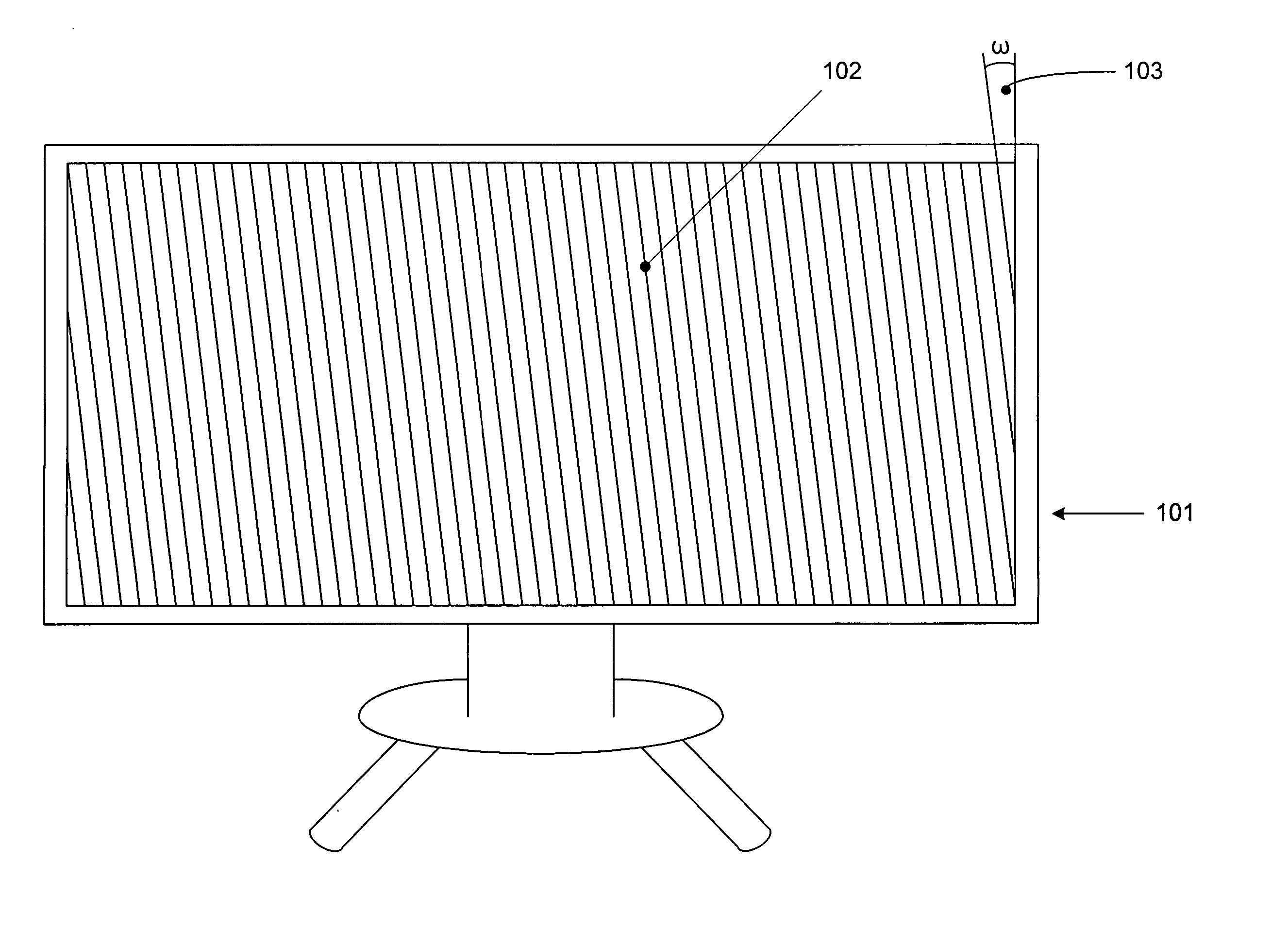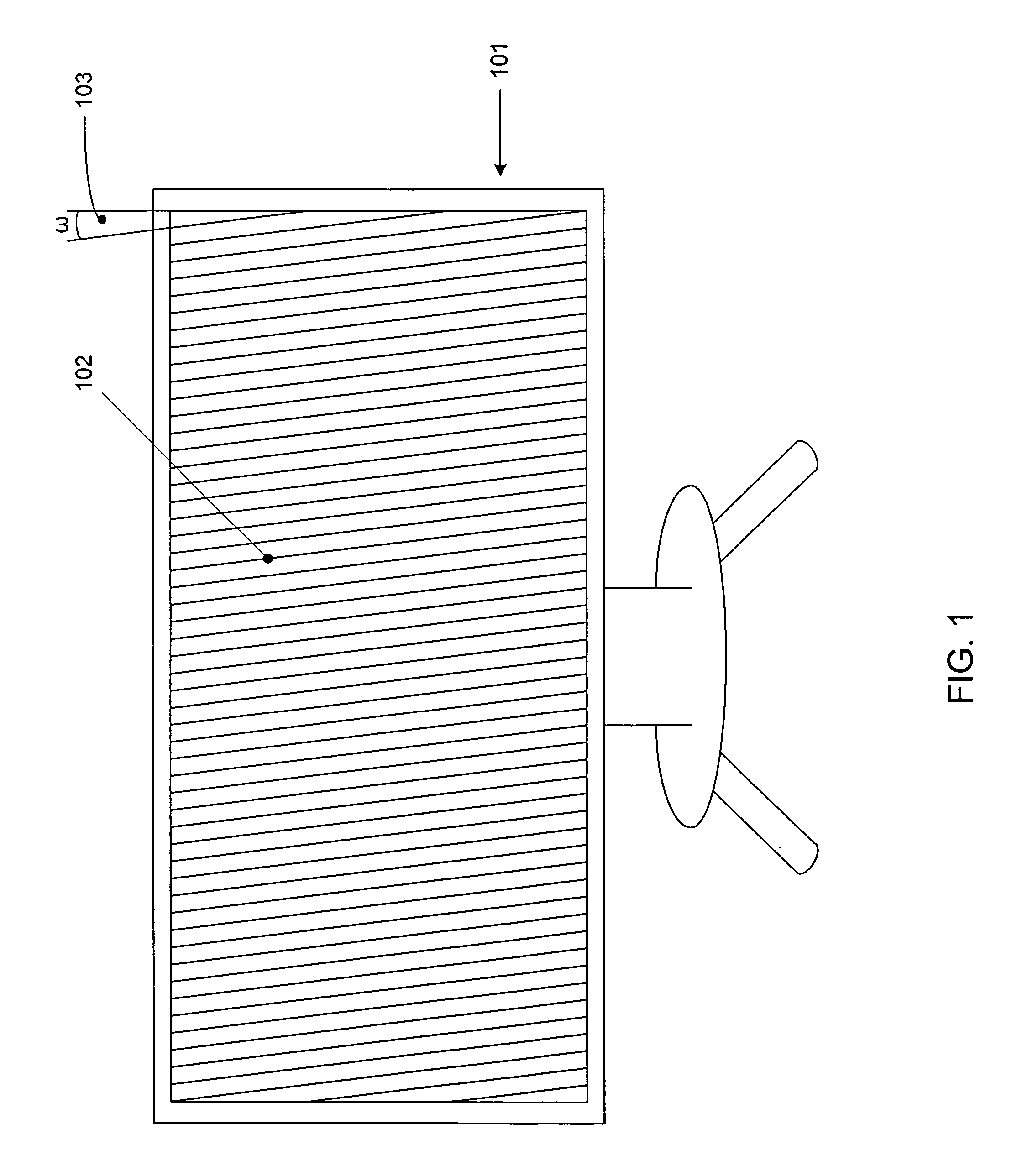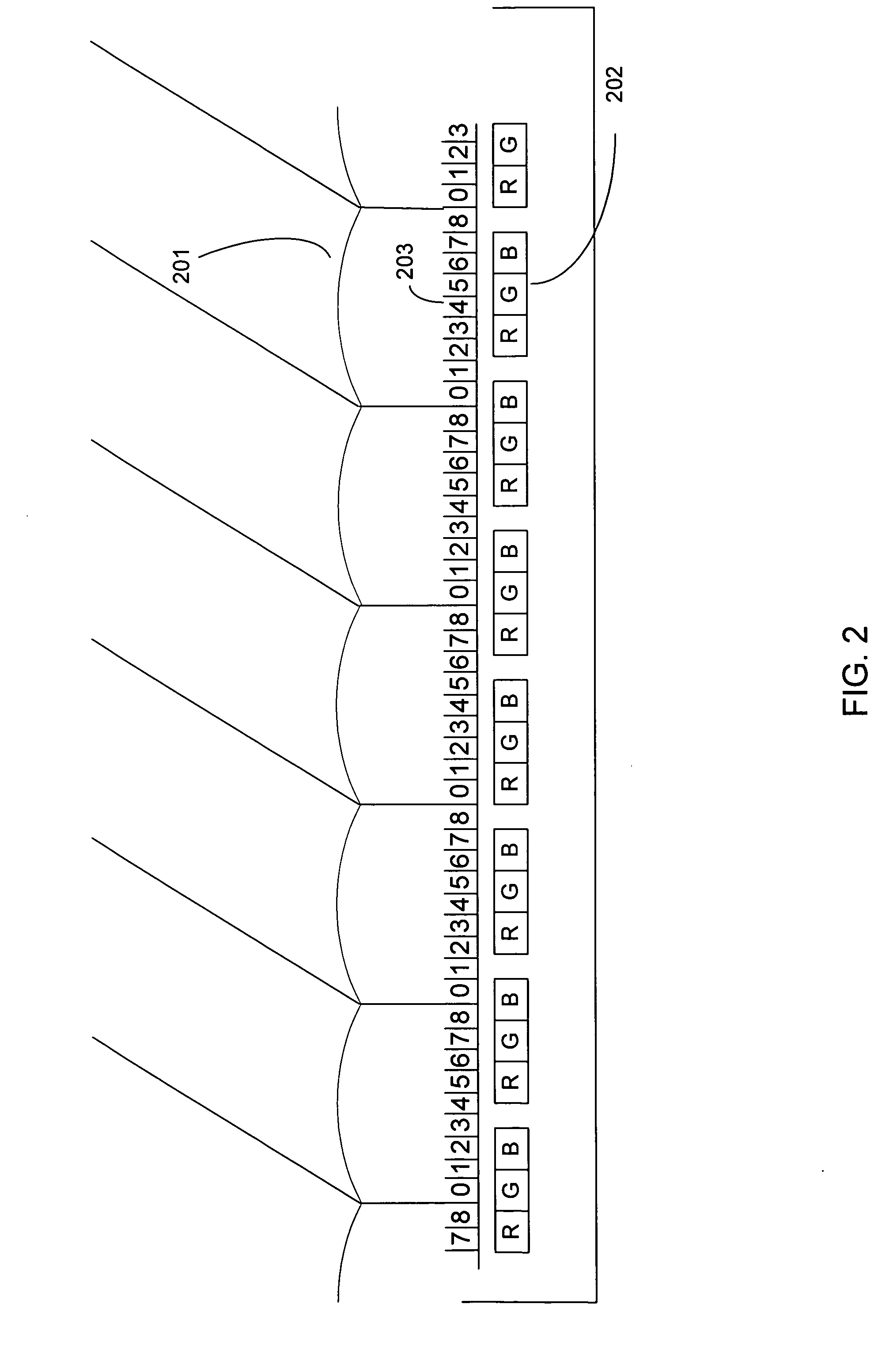Autostereoscopic display with planar pass-through
a technology of autostereoscopic display and planar pass-through, which is applied in the field of electronic autostereoscopic flat panel display, can solve the problems of inability to achieve the planar mode usefulness, performance is unacceptable, and the effective resolution of the display when planar data is viewed, and achieves the effect of enhancing the planar image data
- Summary
- Abstract
- Description
- Claims
- Application Information
AI Technical Summary
Benefits of technology
Problems solved by technology
Method used
Image
Examples
Embodiment Construction
[0027] The present design comprises a combination of optical and software techniques providing a low cost device for passing a high quality planar image through the microlens array of an autostereoscopic display. The transition from one mode to the other will be automatic and transparent to the user. As used in this description, the technology to pass a quality image to the user is called “planar pass-through” or simply “pass-through.”
[0028] Any flat panel display has a “native resolution”, by which is meant the actual pixel count in the horizontal and vertical dimensions. Flat panel displays, unlike their CRT precursors, have a fixed resolution capability and rely on image scaling in order to match a variety of resolution images to the display. The microlens array serves to modulate the native resolution of the flat panel display, while enabling stereoscopic capability, effectively reducing resolution for planar applications.
[0029] The lenslets of the microlens array or lens sheet...
PUM
 Login to View More
Login to View More Abstract
Description
Claims
Application Information
 Login to View More
Login to View More - R&D
- Intellectual Property
- Life Sciences
- Materials
- Tech Scout
- Unparalleled Data Quality
- Higher Quality Content
- 60% Fewer Hallucinations
Browse by: Latest US Patents, China's latest patents, Technical Efficacy Thesaurus, Application Domain, Technology Topic, Popular Technical Reports.
© 2025 PatSnap. All rights reserved.Legal|Privacy policy|Modern Slavery Act Transparency Statement|Sitemap|About US| Contact US: help@patsnap.com



